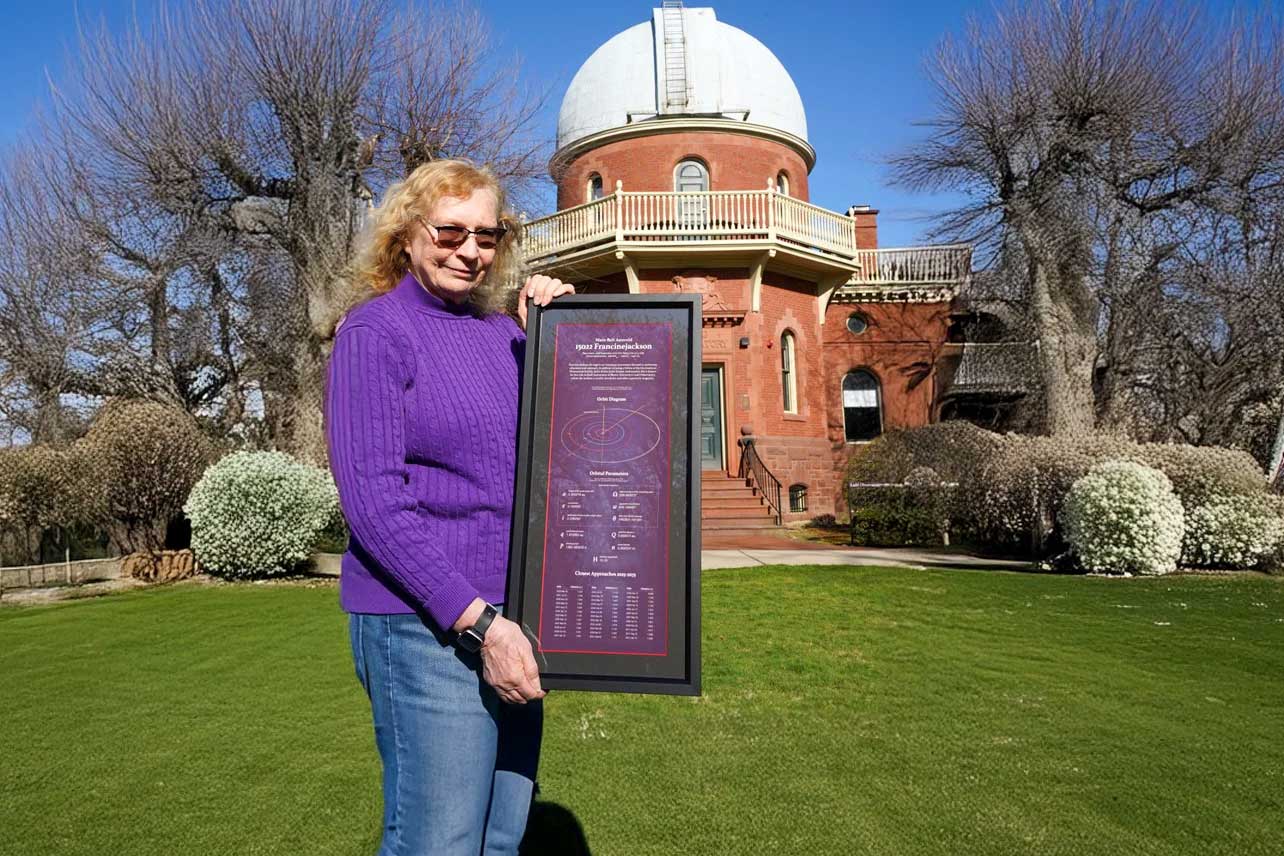Asteroid Named After CCRI Alum Francine Jackson

06/16/2025
On February 24, 2025, the International Astronomical Union Working Group for Small Body Nomenclature (WGSBN) recognized CCRI alumni Francine Jackson’s contributions to astronomy education and outreach by naming an asteroid in her honor.
The designation was announced in WGSBN Bulletin 5, No. 3, under new names of Minor Planets.
Jackson, a Lincoln resident, studied physics at CCRI and graduated in 1969. She identified then-English Chair Walter Brownsword as a "hero of my future" and credited the school for putting her on a collegiate path that led to the University of Illinois, where she studied astronomy.
"It was a welcome transition into college life," Jackson said of studying at CCRI. "I met several great people, all the instructors were willing to help in any way they could, and I am very glad it was there for me."
A planetarium educator since 1974, Jackson recently was honored for her 50 years of service to Brown University’s Ladd Observatory and over 20 years of writing a weekly email newsletter for the Observatory. A Solar System Ambassador, she spends many nights doing star parties for the public.
The asteroid, provisionally designated 1998 SM144, was discovered by Eric Walter Elst, a Belgian astronomer, who had 3,866 minor planet discoveries to his credit. It was captured on a photographic plate taken by the 1-meter Schmidt Telescope at the European Southern Observatory’s La Silla Observatory in Chile on September 20, 1998. It had been observed as early as 1992, then again in 1996, but was then lost until subsequently being rediscovered in 1998.
Located within the main asteroid belt -- between the orbits of Mars and Jupiter -- the asteroid, now officially cataloged as 15022 Francinejackson, orbits the Sun every 1362.5 days, or 3.73 years.
Although very small -- probably no larger than 3 miles across -- and much too dim to be seen with the naked eye, it orbits the Sun very close to the eliptic, the main path the Sun takes across the sky. As such, there is a chance it could be imaged by persons having fairly large amateur equipment. It gets close to Earth, approximately 1 astronomical unit (93 million miles) roughly every 16 months.
The next times will be March, 2026, July, 2027, and November, 2028.



